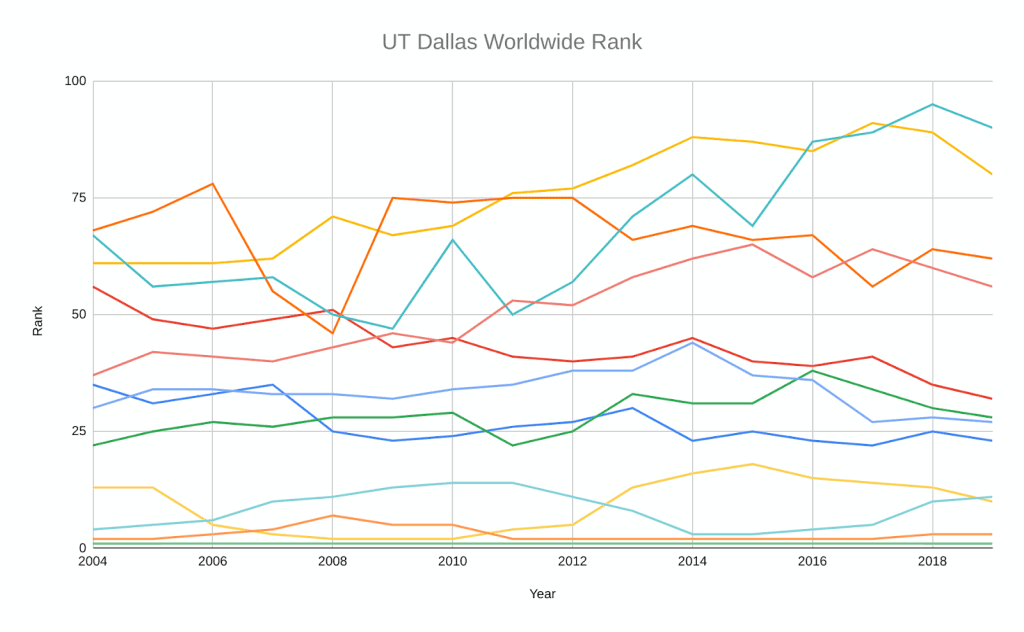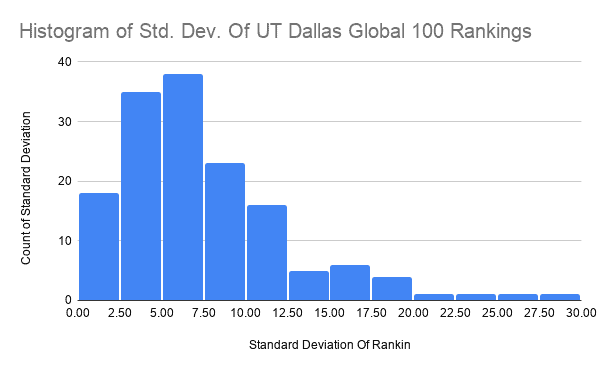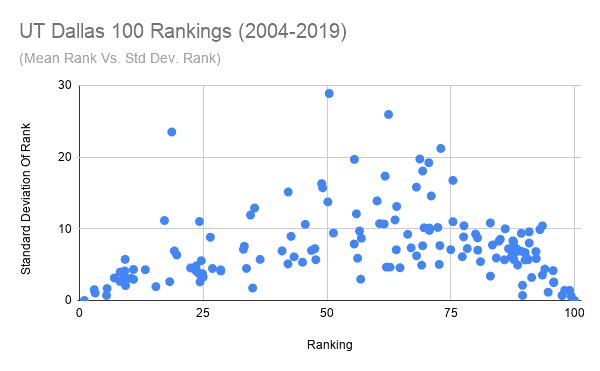Would it be nice if someone just told you what the best graduate program is for you? Would it be so easy if they just said do you Masters or MBA at this school, and do your PhD or Doctorate at this school? It turns out that there are many ways to determine what is the best graduate program for you, and you are likely not going to read about these ideas on other blog posts on the internet.
First of all, I am going to tell you right now that there is no such thing as a globally best program or best university. All disciplines and universities have different rankings. All professors that you might work with have different qualifications. All countries have different education systems. Determining ‘the globally best’ graduate program is a faulty logic. What you need determine is what is best fit graduate program for you.
Finding the best graduate program is kind of like saying, I only buy the best automobiles. Have you ever shopped for the best automobile? I have, and it stinks. I have no clue, and continue to have no clue what is the ‘best automobile.’ There are so many different types, makes, models, features, and colors of automobiles, that by the time you look for the best automobile for you, you will narrow down to either a rather unusual automobile that fits your different needs, wants, characteristics, and traits; or you just through up your hands and just pick “an” automobile.
Personally, I do the latter, but I know lots of people that do the former.
However, just like consumer reports in automobiles, there are rankings for graduate programs to help you determine the best programs. The best way to determine the globally best programs is to look at rankings of various graduate programs. Every discipline has rankings. In my field (Strategy, or Business Administration more broadly), the three most prominent rankings to determine the best programs are:
- UT Dallas Rankings. (More for PhD rankings)
- FT Rankings (Often used to determine both PhD and MBA rankings)
- US World News (Often used for undergraduate and Master’s level rankings)
Rankings Change
The biggest thing that I want to communicate with this post is that rankings are lagging indicators of reputation. They are also not stable over time. I want to illustrate. Here is a sample of ten universities from the UT Dallas Rankings. I am not providing their names in the post, as it is not my job to ‘out’ these institutions. It also goes against the point I am trying to make in this post – I want you to make more intelligent decisions and look into the rankings.
What you see in this rankings graph is that there is considerable variability in rankings. Remember that the rankings are inverse. Rankings that are closer to 100 are ‘worst’ (whatever that means?!) than rankings that are closer to 1. So, the yellow line at the bottom represents the rankings for an institution that is higher ranked.
What you do see is that rankings are always changing, and there is very little stability. Some institutions are moving up in the ranks over time, and some are moving down. Only the top institution (Wharton U. Penn) has a stable rank over time.

I also want to show you two more graphs to illustrate the point that rankings change over time. First, let’s look at the standard deviation of ranking of each institution. What we are looking at is the extent to which the ranking of each institution deviates from its mean (‘average’). You will notice that most institutions that the average standard deviation is around 6. If you take the standard heuristic that manufacturers use to measure the ‘true’ mean of the quality of the product, we should expect that the ‘true’ mean of rankings for institutions falls within three standard deviations of its mean (so-called, three-sigma rule). This means that the true mean of the average institutions ranking falls within 3*6=18 rankings, with 99.7% probability. Let’s put this in perspective, this means that institutions that are ranked 18th in research productivity, main not actually rank 10th, but their actual rank falls somewhere between best (#1) to 36th.

Note a challenge with this analysis. The standard deviation of the rankings have a long-tail, which means some institutions change dramatically in the rankings over time. This makes the analysis based on standard deviations (without doing log transformations) a bit skewed. However, I am using this for illustrative purposes – rankings change over time for many universities. Moreover, the clustering of standard deviations of rankings generally suggests that even those institutions that are stable in the rankings over time (say, bouncing around the rank of 18), tend to fluctuate around some ‘true’ value of research productivity (even if their rank of 18 is their ‘true’ mean, they sometime can be ranked 10th and sometimes can be ranked 30th because of ‘random’ changes).
Second, let’s look at the mean of the rankings versus their standard deviations. You will see that the stability of the rankings tend to be near those that are ranked first and near those who are ranked 100th. This is not surprising, as those that are ranked near the top tend to accumulate resources (see why rankings change below). Those that are ranked near the bottom likely enter the rankings for a few years and drop out, which makes their standard deviations lower. Moreover, when the institution is ranked at the edge-points, there is just not much room for the rankings to deviate, unless they fall dramatically because of a crisis, or rise dramatically because of some sort of spectacular good luck / management.
What you should be looking at are the rankings and their standard deviations that are near the middle. This is probably more representative of most major PhD programs. You will see that their standard deviations are quite large, which is somewhere around 10. Again, this would mean that those with a ‘true’ rank of 50, are likely to fall between 50-3*10=20 to 50+3*10=80, with 99.7% probability. In other words, it is likely that a institution that is ‘truly’ ranked 50th can sometimes be ranked 20th and sometimes be ranked 80th, and this would fall within the ‘normal’ range.

Why Do Rankings Of Institutions Change Over Time?
There are all sorts of reasons why rankings of institutions change over time. However, a possible reason is do to labor mobility between institutions. In other words, people move and they often move freely between institutions.
When a researcher gets “hot,” then they become interesting to other institutions who want to “nab them.” Or, if PhD students are doing well, then they are likely to go to a university that is higher ranked than the university they are at. It is even not unheard for universities to move entire labs to other universities based on the research that is being performed.
Rankings can also change because of management of the institution. You would be surprised on how much administration (eg., Deans and Presidents) makes a difference on the university. If the administration decides to pivot from the current strategy and emphasize some research areas over others, that research area that are more popular in the previous regime is likely to have professors that are higher candidates for leaving.
Rankings can also be somewhat gamed. Let’s be honest – everyone knows that all rankings can be gamed to some degree. Just like how teachers at schools will teach to the test, entire institutions and some motivated professors will focus on gaming those metrics. If the number of publications are an important metric, then professors and institutions will focus on getting those publications. If the number of citations on publications is important, than actors will focus on that.
The thing to also remember is that are many institutions that lack funding for marketing and advertising. Doing well in rankings requires resources dedicated to filling out ranking surveys and such. So, even if a fairly research productive school is doing well, and they have supportive staff and faculty, but they don’t have the administrative staff, they are unlikely to do well in rankings.
How Should You Determine Your PhD Program?
Most of us that are in the ‘biz,’ would likely just tell you a simple rule: See where other people have gone and try to replicate that. The other thing that you can do is ask your professors about the programs that they would like to go to. Pretty near everyone will be consistent on what are good schools with good people, regardless of rankings.
There is also another simple rule that most people would encourage you to do: Find institutions and people that fit with who you are. I know that it is difficult to do, but you have to often look beyond the metrics and look for people that you find interesting. Look at their research. Read the articles that they write. Did you find the topics interesting? Did the articles help you to understand a topic? Does it appear that the person or team have a research program? You should really ask critical questions about the ‘human resources,’ rather than rely on metrics alone.
I would also suggest for you to use another simple rule: Talk to people that you know and trust. Visit the people that you would like to do research with. Ask the PhD students and researchers that are near the program what they think of the overall program. Have multiple meetings with the people. Remember, you should take this process seriously as it will set the tone of what you do for a long time in the future.
Why Are PhD Rankings Important?
Don’t get me wrong – rankings are important to your decision. Rankings do serve a purpose. Rankings signal quality, competence, and experience, and among other things.
Rankings help to allocate resources efficiently, and swiftly. Consequentially, rankings help us all make decisions. For example, we buy things from the best retailers, from the best brands, and the best people. We go to the best schools, or know of people that made it into the best programs. We try to become the best at what we do. We focus on being the best in our organizations, and working at the organizations. They are an easy way to consolidate a lot of information about PhD programs.
However, they are just that – a consolidation of many indicators, and these indicators often do not jive with the overall construct. It’s like having to choose your next President based on two alternatives. We know that Presidents, universities, and everything else in the world are a complex things, so breaking it down into a single number is often a rather strange (and political) process that is often based on many other things that true fit with you.
If You Are Thinking About The Best Graduate Programs Based On Rankings, You Should Also Be Thinking About What These Rankings Mean:
1. How is the ranking determined? By an outside committee? From friends and family? By ourselves?
2. By what metrics? Are rankings just about measurable performance? If it is, you become what you measure. How many metrics do you count? How do you add up these metrics? We easily change the rankings by putting different values on the different criteria. This is the same as value-weighted or equal-weighted stock market indexes. Or, the Dow Jones versus the SP500 index. Even though they are measuring the same thing, they will give you different numbers.
3. How stable are the rankings? Why would expect the rankings not to change? What if you are best today, but not tomorrow? What if you are best here, but not there? We can easily change the classification of what is best by simply changing the area of research and the country. If you only focus on US or Canadian institutions, you are most certainly going to have different rankings than focusing on global institutions.
4. Do rankings even matter? If you are best in one category, does it qualitatively effect your life? If you are best in one thing, does that necessarily mean you devoted resources to that and not another? After several years in the field, I have become a bit more skeptical of rankings. I would suggest that best thing for you is to find the best graduate school – student fit. Not every high ranking institution is a good fit, and not have low ranking institution is a bad fit.
Determining The Best PhD Programs Is Like Dating.
Imagine the process as if you are ‘dating’ the institution. When you first started dating, I am sure your parents told you to take it slow. The process is just a lot more fun if you take the selection very seriously. Take time to get to know the people that are involved. Focus on really getting to know people.
I know it seems strange and absurd to view the process in terms of dating, but most senior professors that have had a long and productive career will do exactly that. They will take each move very seriously, by getting know all of the people that are at the program, getting involved in the institution in an in direct way before they move, and talking, talking, talking with everyone at the institution. Just like best practices in business, it would be a wise move to replicate what these senior faculty do, and ‘date’ the PhD Program that you are interested in.
If you want more information and ideas about how to choose your graduate program, I would suggest that you watch the following three videos:
If you want to learn more about graduate school, and you need help, you should check out these blog posts:
